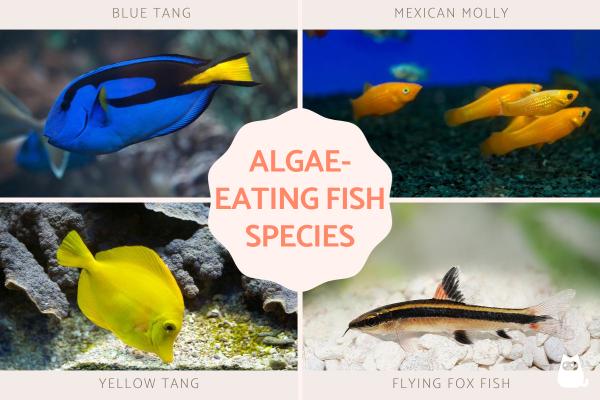
Choosing the right fish for your aquarium requires various considerations, with their diet being particularly important. Some fish are carnivorous and cannot share a fish tank with species it might eat. Others will need specialized nutrition to ensure health and well-being. Algae eaters are aquarium fish that eat various forms of algae, eukaryotic organisms which can vary greatly in appearance and structure. These fish can be very beneficial for an aquarium. Not only will they add to the aquatic diversity, but they can help maintain hygiene in the tank by consuming algae which can grow considerably. They also improve water quality and prevent eutrophication.
AnimalWised shares 10 algae-eating aquarium fish species to see if they can be beneficial for your fish tank. These fish that eat algae are very diverse in terms of appearance, but not all will be able to live together. Among other reasons, this is because some algae eaters are freshwater fish and others need saltwater aquariums.
Blue tang (Paracanthurus hepatus)
If you think this marine algae-eating fish looks familiar, it might be because it is the species to which Dory from the Finding Nemo franchise belongs. Although it it the only member of its genus (Paracanthurus), it is also known as the royal tang, hepatus tang, Pacific regal blue tang and flagtail surgeonfish, among other common names.
The blue tang lives in tropical saltwater seas ranging from East Africa to Australia and Micronesia. It is distinguished by its intense sky-blue color, with dark blue lines on the upper body and a blue spot behind the pectoral fin. Its tail and pectoral fins are a vibrant yellow. Juveniles are yellow and acquire their characteristic blue color as they mature.
A relatively large aquarium fish, they can grow to between 4.7-15" (12-38 cm) in length, with an average weight of 21 oz (600 g). Although a herbivorous fish that feeds primarily on algae, it also consumes microalgae and zooplankton.
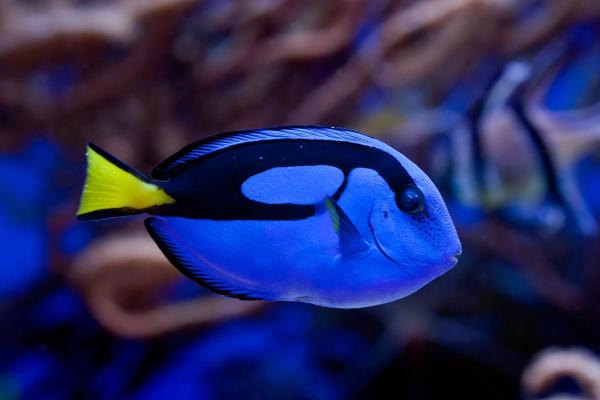
Foxface rabbitfish (Siganus vulpinus)
Another saltwater algae-eating fish, the foxface rabbitfish inhabits the eastern Indian Ocean and the western Pacific Ocean. It can be found in seas of Indonesia, Taiwan and Australia, including the Great Barrier Reef. Its habitat includes coral reefs and lagoons, being recorded at depths of up to 100 ft (30 m). Its body is compressed and its head features a pronounced slope with a tubular snout.
It can reach up to 10" (25 cm) in length, although it usually measures around 7.8" (20 cm). Its color is bright yellow, with a white head and black markings near the eye and chest. A curious fact is that this algae eater is an animal that can change color. At night or during times of stress, the foxface rabbitfish can darken its body and a mottled pattern appears on its scales. It is an omnivorous fish that feeds mainly on algae and zooplankton.
Discover more about fish diet with our article asking which types of fish are omnivorous?
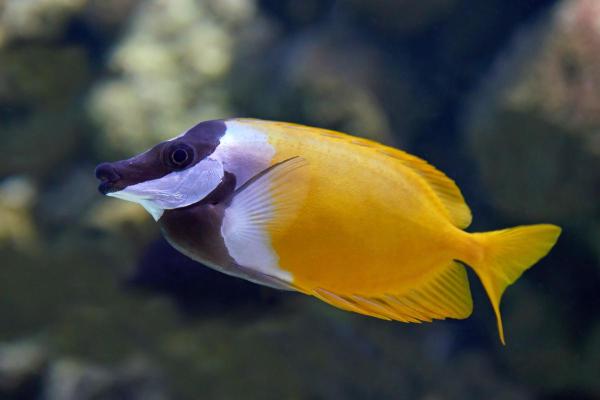
Yellow tang (Zebrasoma flavescens)
Another marine fish that eats algae, the yellow tang is only suitable for saltwater aquariums. Also known as the lemon sailfin or somber surgeonfish, the yellow tang is found in the Pacific, primarily around Hawaii. It can also be found in Japan and other nearby islands. It prefers subtropical waters and goes through a larval stage before maturing.
The body of the yellow tang is oval and narrow, with a long snout. They have a large dorsal fin and a sharp white spine on its tail which it uses for defense. As its name suggests, its color is bright yellow, but it darkens at night. It is a herbivorous fish that feeds on filamentous algae and macroalgae on reefs, although it also consumes some zooplankton. It can feed alone or in groups.
While learning about the different types of fish that eat algae, you may be wondering how they are able to feed. You can find out with our article asking do fish have tongues?
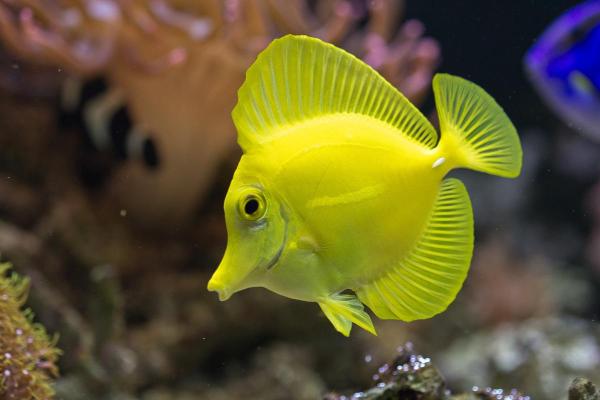
Mexican molly (Poecilia sphenops)
Also known simply as the molly, this algae-eating fish species inhabits both coasts of Mexico and northern Central America. In the Atlantic, it is found from the Palma Sola River to the Grijalva River. In the Pacific, it ranges from Oaxaca to Honduras and Guatemala, preferring to swim high in short streams. It has also been introduced to the United States and Puerto Rico.
Despite their habitat being in the coasts of oceans, it is a type of fish that lives in either brackish or freshwater environments. This means it cannot live in an aquarium with marine fish. Females are generally large than males, reaching up to 4" (10 cm) in length. While algae is the most important component, their varied diet can include diatoms, phytoplankton, protozoa and detritus. It is a common species in aquariums, where it consumes algae and accepts dry food.
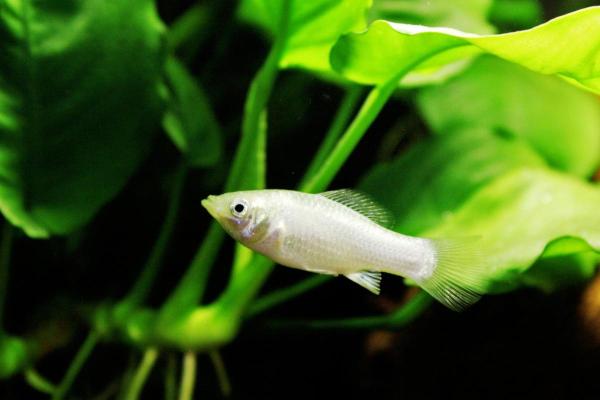
Guppy (Poecilia reticulata)
Also known as rainbow fish or millionfish, the guppy is one of the most common algae-eating fish in freshwater aquariums around the world. Their natural habitat is equally large, distributed in aquatic habitats worldwide. They are native to Venezuela, Brazil, Guyana, Trinidad and Tobago, Barbados, and Antigua and Barbuda, although they have been introduced to numerous countries. They cannot be found in Antarctica.
These freshwater algae eaters exhibit sexual dimorphism. Females are gray in color and larger than males. Females measure between 1.2-2.8" (3-7 cm) and males are between 0.6-1.6" (1.5-4 cm). They exhibit varied color patterns influenced by thyroid hormones. These fish eat algae, but not exclusively. Their diet includes:
- Algae
- Diatoms
- Zooplankton
- Plant fragments
- Insect larvae
- Debris
With such a diverse diet, they can adapt to the availability of food in their environment. However, we will still need to provide them with the right food in an aquarium.
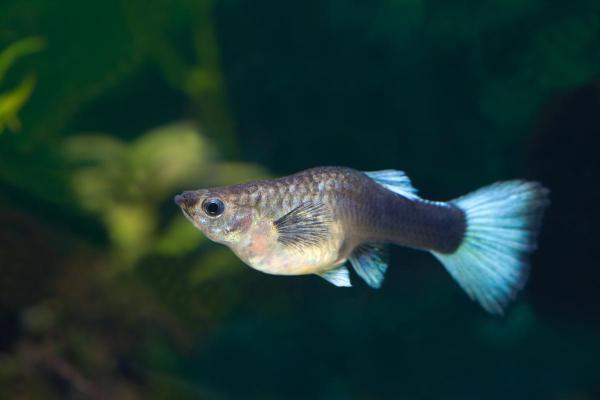
Rosy barb (Pethia conchonius)
The rosy barb is a freshwater algae-eating fish native to southern Asia in a distribution area ranging from Afghanistan to Bangladesh. It can reach up to 6" (15 cm) in length and weigh about 12 oz (340 g). Males are more intensely colored, while females are more robust and lack black fins. Their coloration intensifies during the breeding season.
Although it is an omnivorous species that feeds on worms, insects, and crustaceans, it also consumes algae and plant matter. The rosy barb lives in lakes and fast-moving waters in subtropical climates, with variable temperatures.
In addition to the rosy barb, you can discover which fish can live with goldfish in our related article.
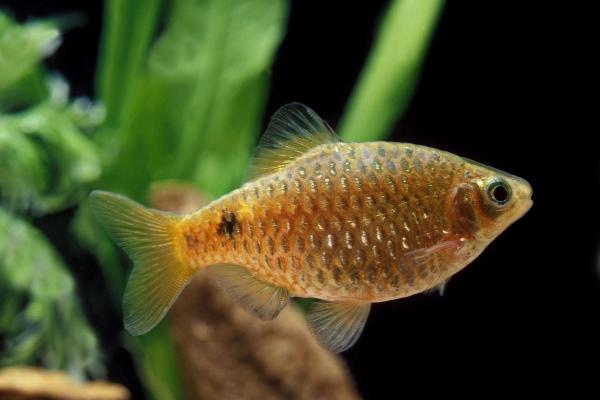
Koi carp (Cyprinus carpio)
The koi carp is a species of ornamental fish which has been specially bred from various carp species, including the common carp. Although the common carp is native to Europe, it has been spread globally, except for the poles and northern Asia. Koi carp can only live in very large aquariums since they can grow to be very big, exceeding 2 ft (60 cm) in length and weighing up to 8.8 lb (4 kg). Males have a larger ventral fins than females.
Koi are omnivorous and specialize in benthic feeding, filtering mud to select their food. They consume zooplankton and phytoplankton, especially algae. Algae is essential in their early stages. Over time, they expand their diet to include macroinvertebrates and plant material, making them a key species in aquatic ecosystems.
You can discover the cultural important of this algae-eating fish with our article asking what is the koi fish legend?
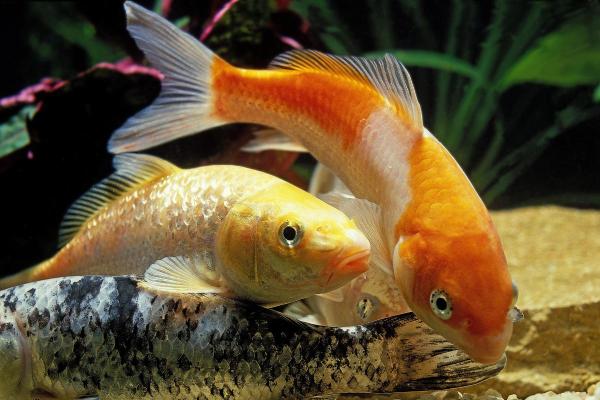
Common pleco (Hypostomus plecostomus)
Native to tropical northeastern South America, it lives in Brazil, the Guianas, and Trinidad and Tobago, the common pleco is also known as the suckermouth catfish. It is one of the few fish species capable of breathing air, adapting to low-oxygen environments by absorbing oxygen in its stomach.
Its distinctive suction-cup mouth allows it to adhere to surfaces and scrape its food. It is notable for its high consumption of algae which constitutes a fundamental part of its diet. By eating algae, this contributes to controlling algae growth in its ecosystem, including cleaning up our aquarium. It also feeds on aquatic plants, small crustaceans and snails, playing a key role in the ecological balance of its aquatic habitat.
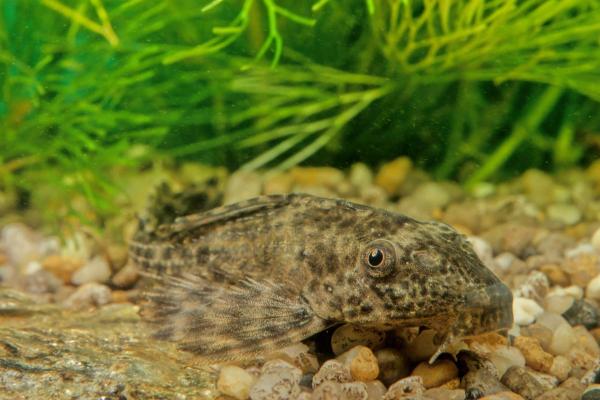
Flying fox (Epalzeorhynchos kalopterus)
The flying fox fish is native to Southeast Asia. It is a freshwater algae-eating fish with an elongated body and a flat abdomen. Its back varies in color from olive green to dark brown, while its underside is yellowish white. It is also marked by a prominent black line from the mouth to the caudal fin, accompanied by a golden stripe.
Although it can reach 6" (15 cm), its most common size is about 4.7" (11.9 cm). It feeds primarily on algae, being an excellent natural controller of their proliferation. Being common in aquariums, it consumes fish flakes and vegetables such as spinach and zucchini. It may even complement its diet with small invertebrates. However, it does not feed on red algae.
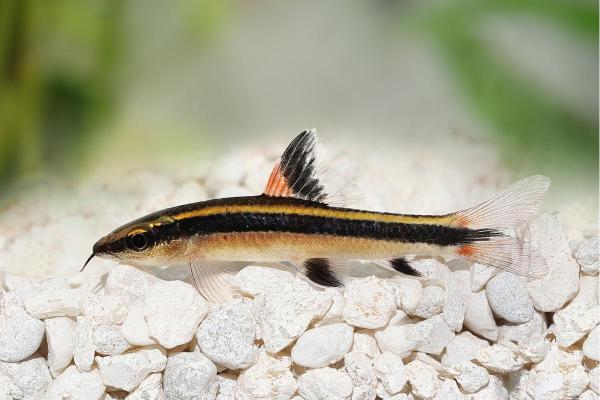
Bushynose catfish (Ancistrus spp.)
We conclude our list of algae-eating fish with the bushynose catfish. Also known as the bristlenose catfish, these are various species of the genus Ancistrus and they are native to South America and Panama. They are freshwater nocturnal fish commonly found in the aquarium trade. Their bodies are covered in bony plates and they possess a characteristic ventral suction cup.
Males develop fleshy tentacles on their heads, while females have smaller ones which only appear on the edge of their snouts. Compared to related catfish species, they are smaller, more robust and flattened, with a maximum length of 6" (15 cm). Their coloration varies from brown, gray or black with white or yellow markings. They feed mainly on algae and detritus, making them essential for algae control in aquariums and natural ecosystems.
You can learn more about aquarium safety with our article asking are catfish dangerous to humans?
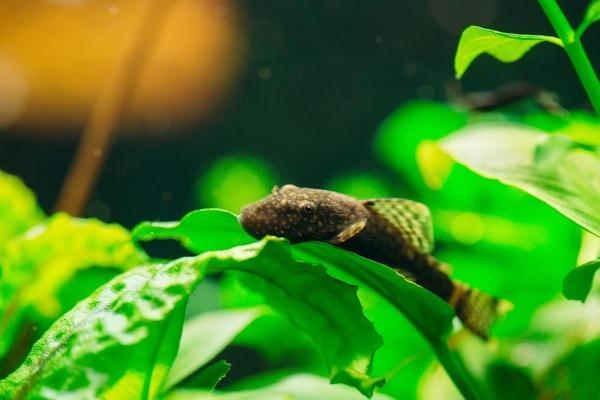
If you want to read similar articles to Algae-Eating Aquarium Fish, we recommend you visit our Facts about the animal kingdom category.
- Animal Diversity Web. (2020).
https://animaldiversity.org/